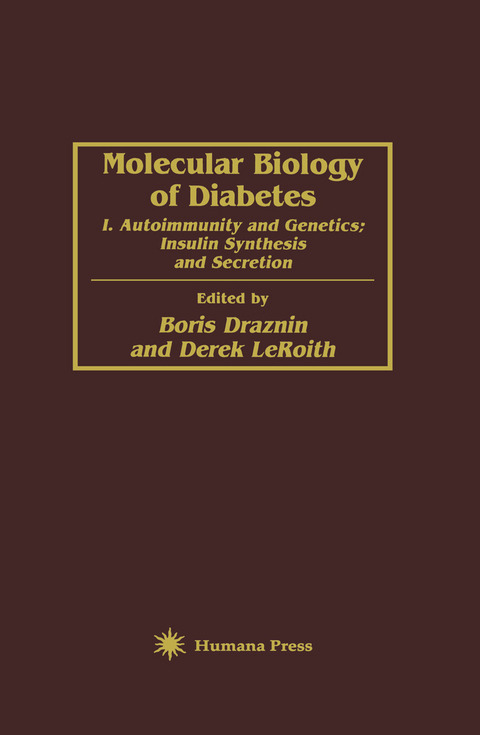
Molecular Biology of Diabetes
Humana Press Inc. (Verlag)
978-0-89603-286-6 (ISBN)
In a rapidly evolving and extremely important area of medical science, it is often difficult for the student, teacher, and researcher to keep abreast of all the important advances. The purpose of Molecular Biology ofDiabetes, Parts I and II is to bring to these individuals the latest knowledge of diabetes-related research in a comprehensive, yet concise manner. To this end, we have assembled chapters, written by most of the world's experts in the field, that we believe compre hensively survey and synthesize a coherent understanding of the subject. Studies of the etiology of type I and type II diabetes are extremely exciting and essential, since we hope to one day prevent the disease using gene therapy. These aspects are covered in Molecular Biology of Diabetes: I. Autoimmunity and Genetics; Insulin Synthesis and Secretion. In type II diabetes, an abnormality in pancreatic secretion exists concomitantly with peripheral insulin resistance. This abnor mality of insulin secretion is believed to be related to a defect(s) in glucose sensing. Uncoupling of glucose sensing from insulin secre tion may be the crucial step in the pathogenesis of noninsulin-depen dent diabetes. In this volume, we have invited authors to describe their studies on all known factors affecting ~-cell function, including autoimmunity and genetics of diabetes, as well as molecular mecha nisms of insulin synthesis and secretion. In the last few years, the most rapidly advancing area of research in diabetes has been, in fact, related to insulin action.
Molecular Mechanisms of Autoimmunity and Genetics of Diabetes.- 1. Molecular Targets of the Autoimmunity of Type I Diabetes.- 2. Murine Transgenic Models of IDDM.- 3. Pancreatic Islet Transplantation.- 4. Pathogenesis of Autoimmune Diabetes.- Molecular and Cellular Aspects of Insulin Synthesis and Secretion.- 5. Insulin Gene Structure and Regulation.- 6. Molecular Engineering of Glucose-Regulated Insulin Secretion.- 7. Glucokinase Gene Expression and Regulation.- 8. Fundamentals of Fuel Sensing and Intermediary Metabolism in Pancreatic A-and B-Cells.- 9. Glucose Toxicity and the Insulin Gene.- 10. Proinsulin-Processing Endopeptidases.- 11. GTP and Its Binding Proteins in the Regulation of Insulin Exocytosis.- 12. ?-Cell Receptors: Mechanisms of Signal Transduction.- 13. Molecular Biology of the Ion Channels in the Pancreatic ?-Cell.- 14. Molecular Biology of Gap Junction Proteins.- 15. The Gluco-Incretin Hormone Glucagon-Like Peptide-1 and Its ?-Cell Receptor.- 16. Islet Amyloid Polypeptide (IAPP) and Insulin Secretion.
This is an essential book for a medical library to have, and it is a welcome addition to the library of investigators in the field. Specialists in diabetes will also find this book very useful. - Kevan Herold, MD for Doody's Health Science Book Review Journal
| Erscheint lt. Verlag | 2.9.1994 |
|---|---|
| Zusatzinfo | XV, 404 p. |
| Verlagsort | Totowa, NJ |
| Sprache | englisch |
| Maße | 152 x 229 mm |
| Themenwelt | Medizinische Fachgebiete ► Innere Medizin ► Diabetologie |
| Naturwissenschaften ► Biologie ► Genetik / Molekularbiologie | |
| Technik | |
| ISBN-10 | 0-89603-286-8 / 0896032868 |
| ISBN-13 | 978-0-89603-286-6 / 9780896032866 |
| Zustand | Neuware |
| Haben Sie eine Frage zum Produkt? |
aus dem Bereich


